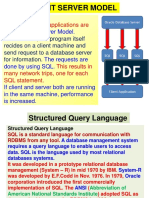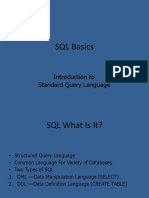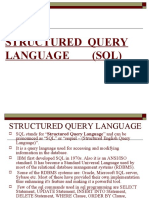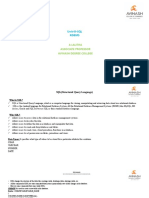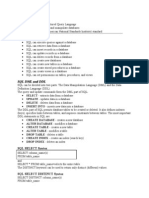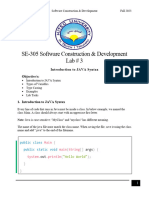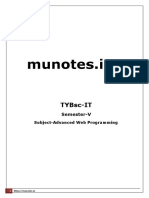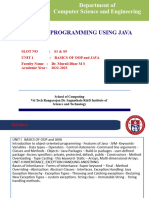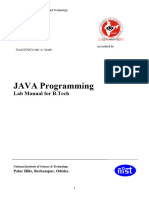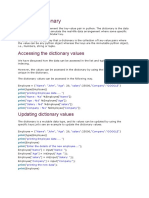0% found this document useful (0 votes)
20 views10 pagesUnit 3 - SQL
SQL, or Structured Query Language, is a standard language used for managing and manipulating data in relational database management systems (RDBMS). It includes various commands categorized into DDL, DML, DCL, TCL, and DQL, allowing users to create, modify, and control access to databases. SQL also supports operations like joins and subqueries to efficiently retrieve and manipulate data across multiple tables.
Uploaded by
nishanthchowdhary1Copyright
© © All Rights Reserved
We take content rights seriously. If you suspect this is your content, claim it here.
Available Formats
Download as DOCX, PDF, TXT or read online on Scribd
0% found this document useful (0 votes)
20 views10 pagesUnit 3 - SQL
SQL, or Structured Query Language, is a standard language used for managing and manipulating data in relational database management systems (RDBMS). It includes various commands categorized into DDL, DML, DCL, TCL, and DQL, allowing users to create, modify, and control access to databases. SQL also supports operations like joins and subqueries to efficiently retrieve and manipulate data across multiple tables.
Uploaded by
nishanthchowdhary1Copyright
© © All Rights Reserved
We take content rights seriously. If you suspect this is your content, claim it here.
Available Formats
Download as DOCX, PDF, TXT or read online on Scribd
/ 10


















